Unsure whether using emojis in cold emails will spark interest and get replies, or get your campaigns sent to the trash instead?
We analyzed millions of cold emails to find the answer for you.
In this article, you’ll get the data on emojis in cold emails, based on an in-depth analysis of millions of lemlist cold outreach campaigns.
Is it OK to use emojis in business emails?
It is fine to use emojis in business and cold emails, as long as they’re tailored to your subject and target audience.
When used right, emojis boost engagement with your message.
When used incorrectly, you come off as overly familiar or unprofessional.
It’s a slippery slope.
Let’s jump into whether using emojis is the right outreach technique for you.
Here’s what the data says:
Out of the millions of lemlist cold email campaigns we analyzed, emails with emojis get 13% fewer replies than emails without them.
But that doesn’t mean that you should give up on emojis altogether!
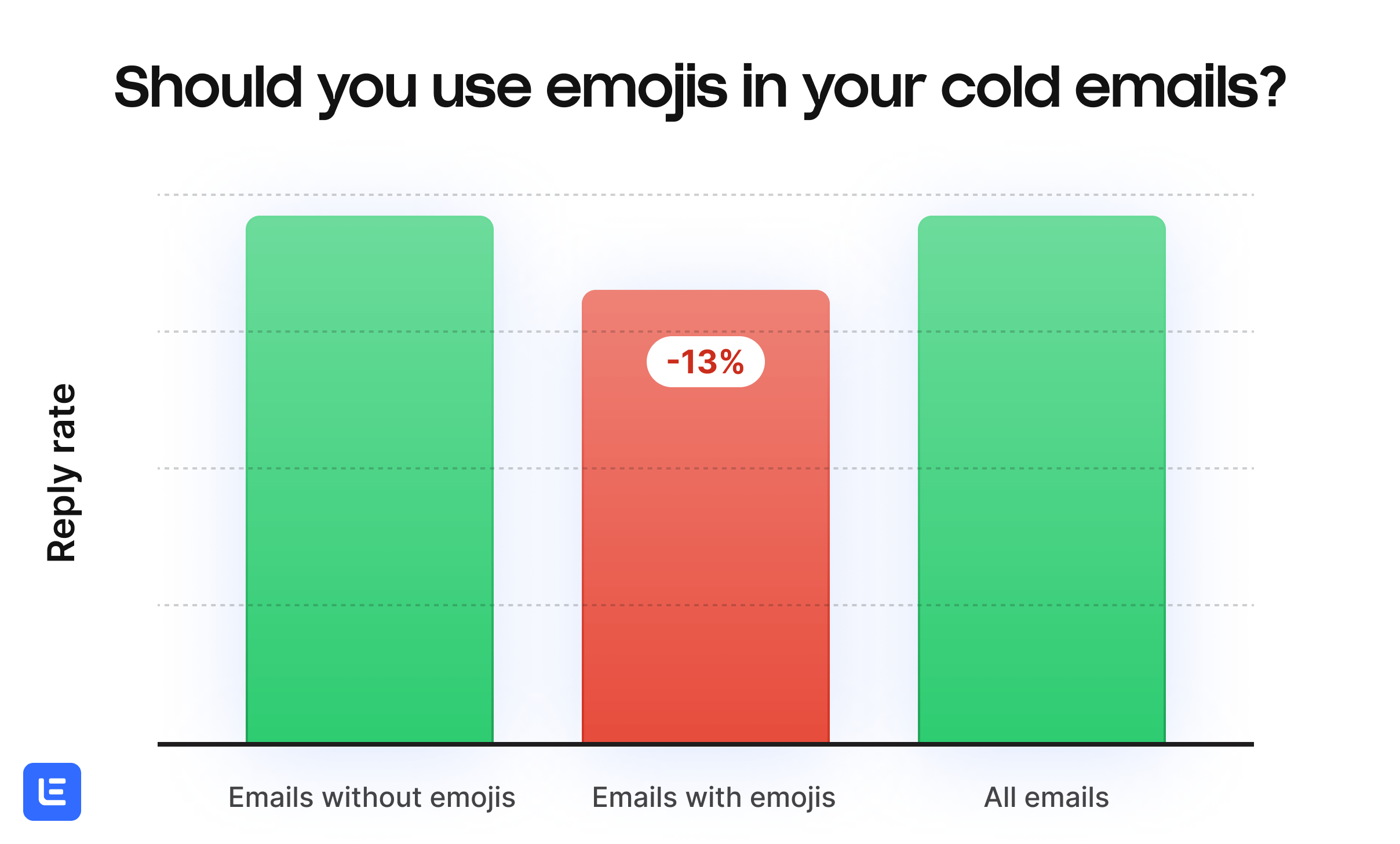
The “with emoji” column in the data above includes emails sent with any number of emojis: from 1 to 30+.
You can imagine that an email with more than 10 emojis is going to have a different success rate than an email with only one or two.
If you take a closer look at the breakdown of booking rates per number of emojis, you’ll get a clearer idea of where the problem is:
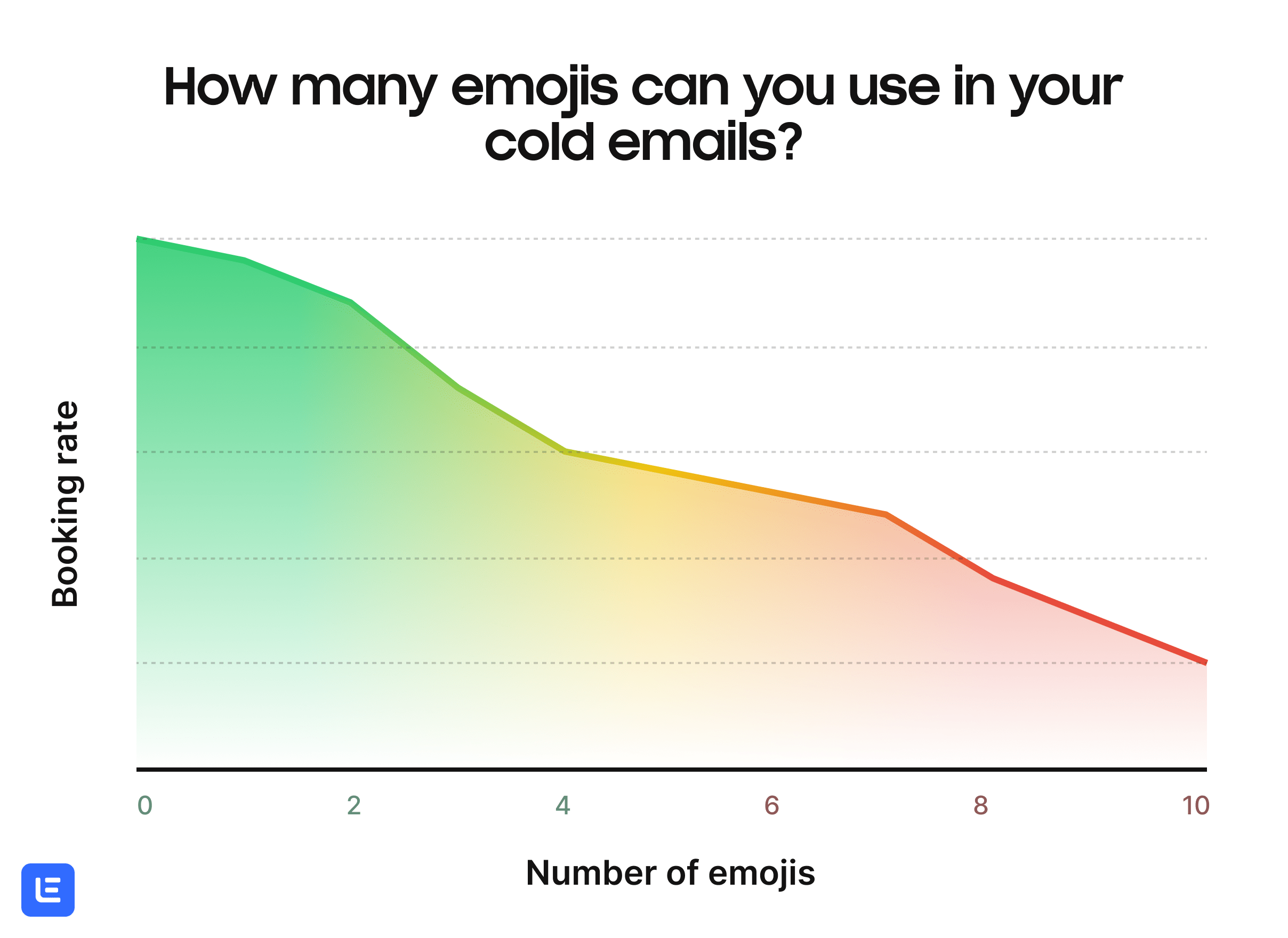
Emails with 1 or 2 emojis have a small dip in booking rates compared to emails without them, but not a significant amount.
On average, booking rates with 1 or 2 emojis per email are comparable with emails that don’t have any.
Depending on the circumstances, you won’t necessarily ruin your chances of a reply with an emoji or two.
The rates really start to dip when you add more 3 or more emojis to the body of your emails.
This is where you increase the risk of prospects thinking it’s spammy or inappropriate.
As a rule of thumb: when adding emojis to cold emails, the fewer the better.
Should you use emojis in your cold email subject lines?
Similar to using emojis in the body of your emails, adding emojis to your cold email subject lines can go both ways.
Either they will draw prospects’ eyes, add personality, and drive clicks, or they will turn people away.
It’s all about how you use them.
Here’s what the data says about it:
Adding emojis to your subject line can result in 6% lower open rates:
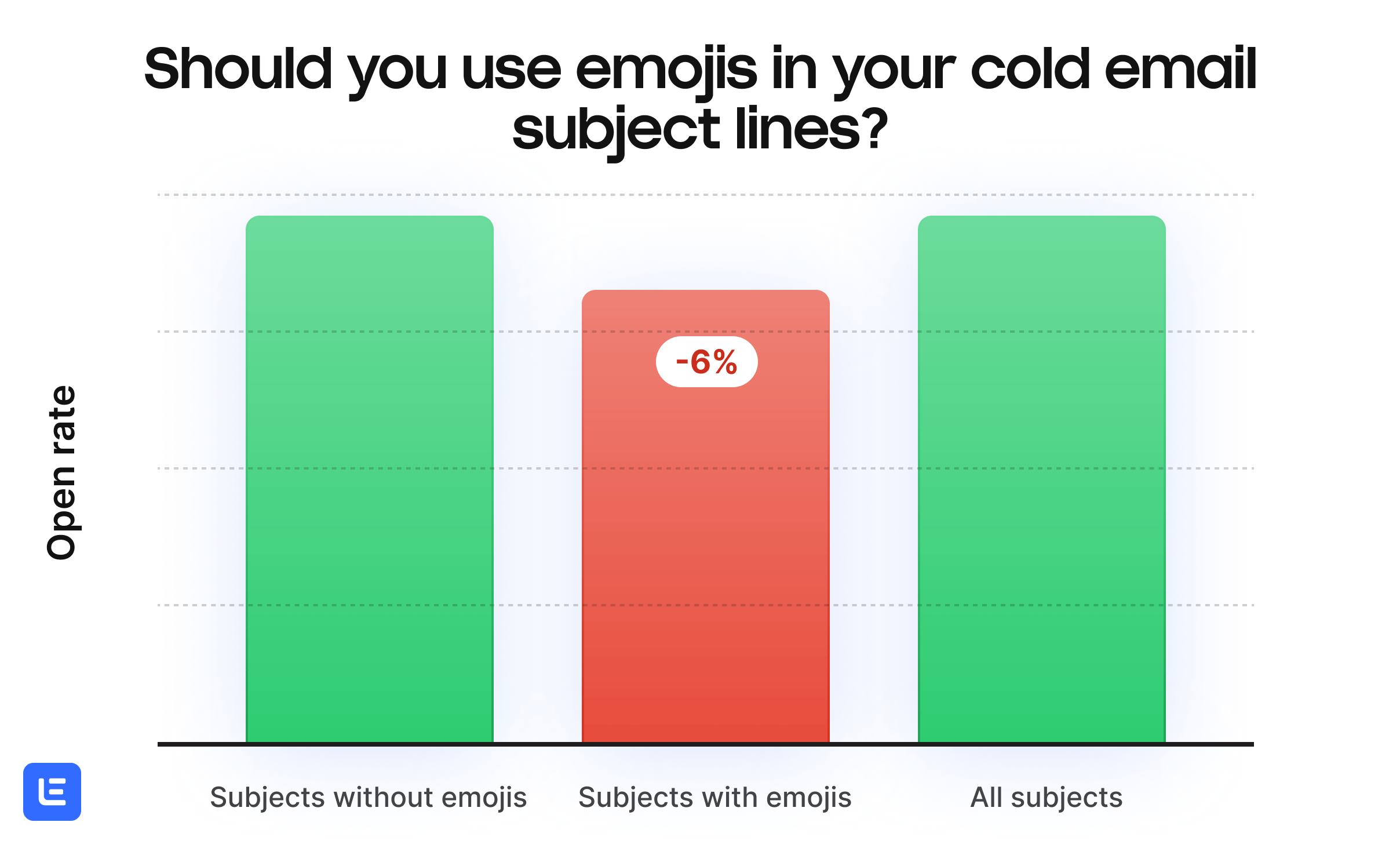
But once again, there’s more nuance to the data than a simple yes or no.
In our analysis, we gathered nearly 2 million emails with no emojis in the subject line and only about 20,000 with emojis.
With numbers like that, the overall average is always going to lean in the direction of emails with no emojis.
So what does that mean for you?
It means you’ll have to decide, based on your own target audience and goals, if emojis will boost your open and reply rates, or drive them down.
But you don’t have to figure that out on your own.
Here is everything you need to consider when deciding if you want to use emojis in your cold outreach:
How can you use emojis in cold emails?
Should you be using emojis to connect with prospects? Let’s find out.
When using an emoji you want it to represent exactly what you are conveying as to create anticipation and set the tone without even reading the message.
Creating urgency You can use emojis to signify the clock is ticking, or to be quick to catch the offer you have on the table, etc.
Some of the more appropriate choices include:
♀️
Showing excitement/happiness
Emojis can also be used to show that you are excited/happy to be in contact with that particular person, or that your offer may produce some smiles.
Some of the more appropriate choices include:
Celebration
You can “celebrate” one of your prospect’s most recent successes, or the possibility of closing a deal, etc.
Some of the more appropriate choices include:
Creating checklists
You may want to create a checklist, or use emojis to make your point stand out more.
Some of the more appropriate choices include:
✅❌⭕⬆️
For special occasions
Maybe you’re launching a special offer based on a special occasion, or maybe your emails just happen to come around the holidays.
Some of the more appropriate choices include:
⛵
❌ Emojis you should avoid
Although using a couple of emojis may increase your chances of getting a reply, there are some options that should be off-limits as they’ll make you seem very unprofessional.
Of course, the appropriateness may vary depending on the context of your email!
For example:
Does the channel you’re using affect the use of emojis?
YES!
Let’s be honest here, each channel holds it’s own implications.
Reaching out via email can be a more formal approach (again, depending on your area and context), so in certain occasions using emojis could be wildly inappropriate.
However, if you reach out via LinkedIn you could have more freedom and flexibility with the use of emojis.
Lastly, if you reach out via Facebook, it’s understood that it’s a very casual channel as people tend to use Facebook to chat with friends or acquaintances, leaving behind a more formal attitude.
So, if you’re joining a Facebook group for example, emojis are certainly the way to go!
The risks of using emojis in cold emails
As seen in the data above, adding emojis to your cold emails can cause 13% lower reply rates if used in the body text and 6% lower open rates in the subject.
Plus, a study by the Nielsen-Norman Group showed that emojis in emails made people feel 26% less likely to trust or engage with the message. In the study’s terms, emojis “increased negative sentiment.”
Clearly, the risk of using emojis in your cold outreach is coming off as spammy or unprofessional, and getting fewer opens and replies.
However, the Nielsen-Norman study only took into account e-commerce marketing emails, which already come off as spammy to most prospects
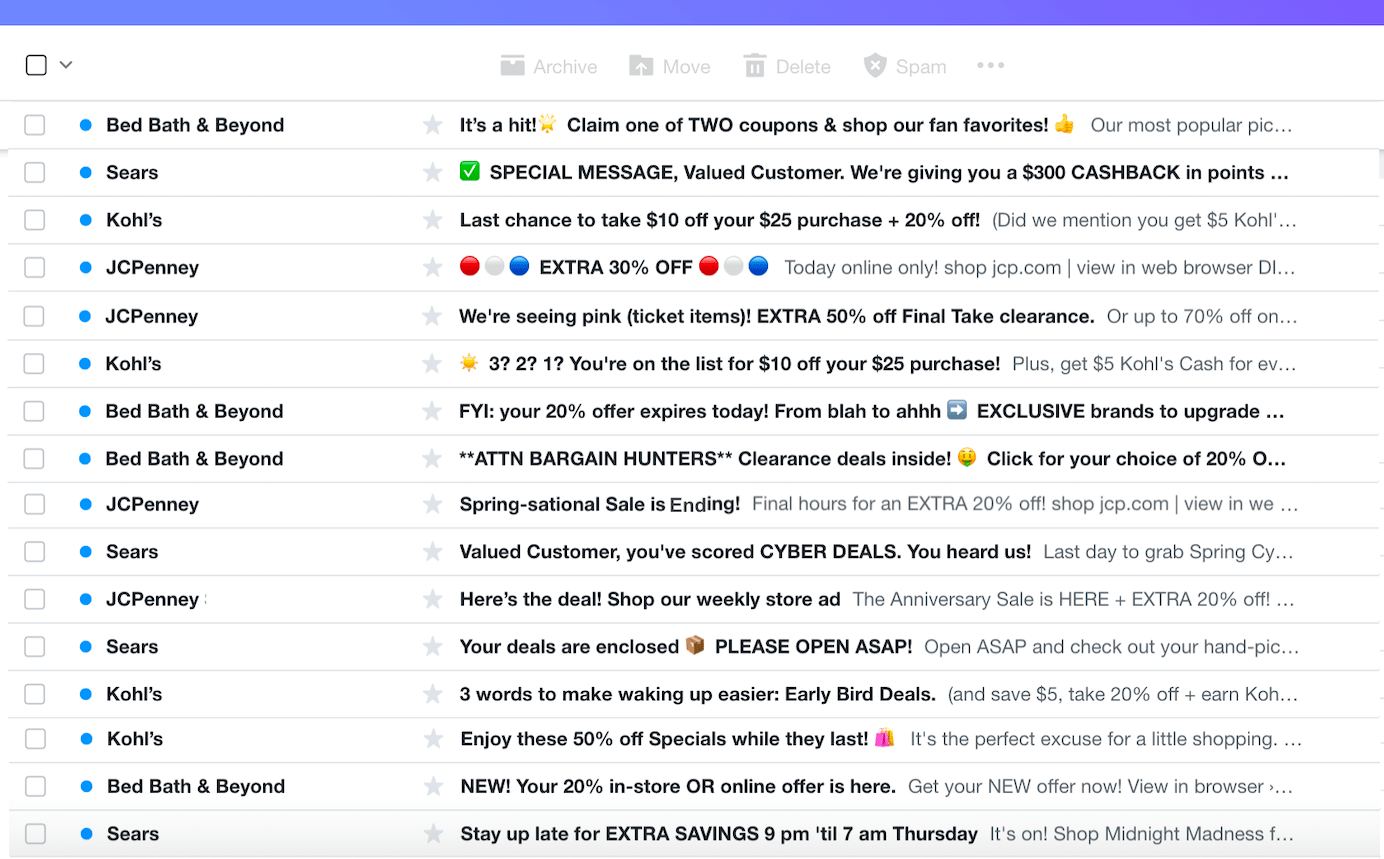
And even this study mentioned that emojis could be worthwhile “where they truly add value.”
So here’s how you can add value (and get more replies) with emojis in emails:
Emojis in cold email: best practices
When Experian tested emojis in the subject lines of their newsletters, picking the right one could increase their open rates by 56%.
In particular, they found success with the sun ☀️ emoji, and the umbrella ☂️ emoji.
The sun increased open rates by 15%, and the umbrella by 50%.
Another study tested out themed emojis (champagne on New Year’s Eve, or a kiss for Valentine’s Day).
They found that thematically appropriate emojis could increase open rates by 5-30%.
So if you want to test out emojis in your emails, make sure they’re:
- Appropriate for your target audience
- Aligned with your personal or company brand
- Thematically appropriate
- Not too many – keep it to 1 or 2, max
Here’s an example of one of our users who added emojis to his cold email campaign, with an 82% open rate and a 53% reply rate.
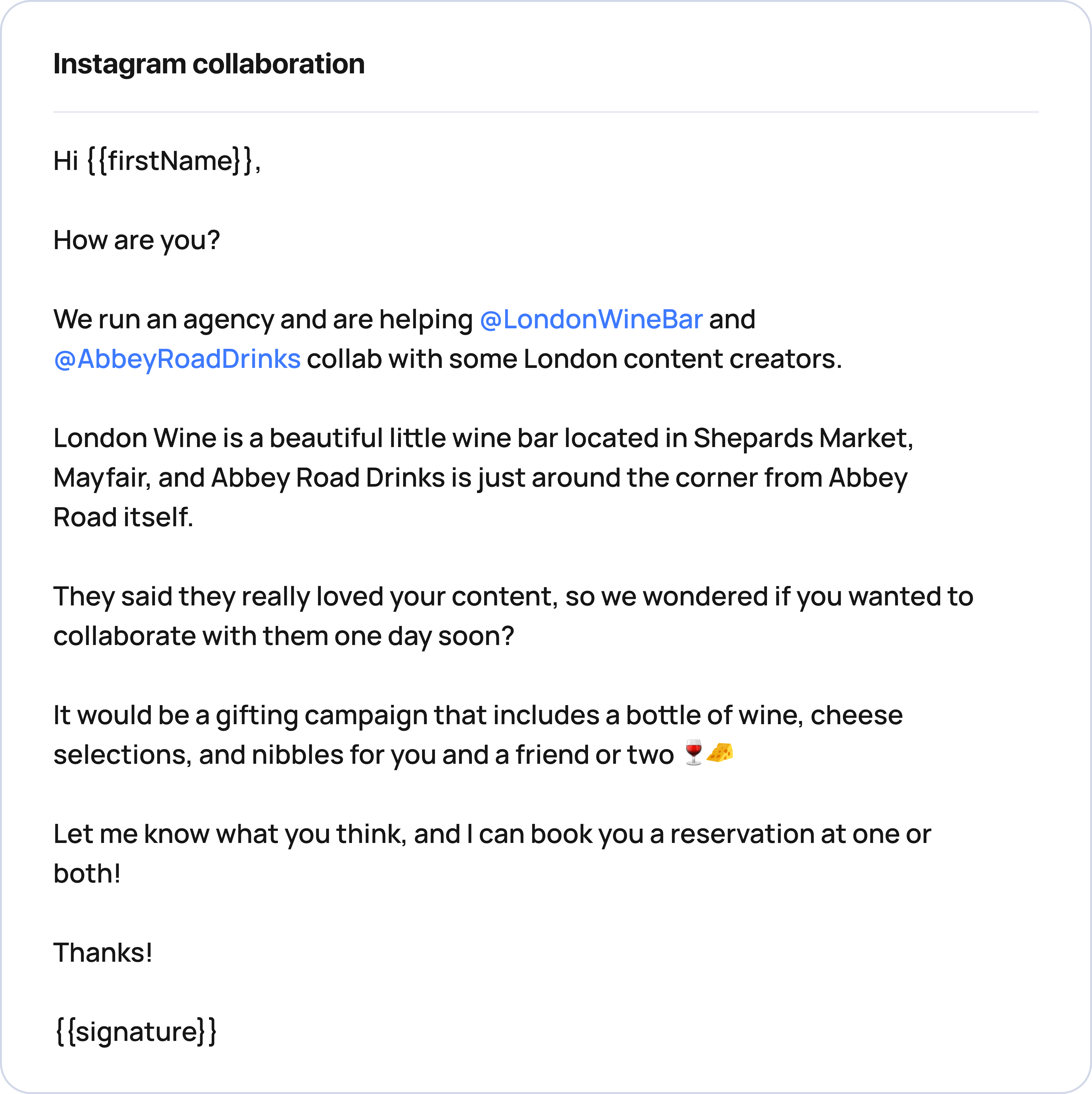
In this case, the emojis worked, because:
→ The target audience is content creators and influencers, who are used to seeing and using emojis in their work
→ The tone of the email is casual and friendly
→ The emojis have a thematic fit with the message: wine and cheese
If you’re curious about whether using emojis is going to boost your reply and booking rates, find out by A/B testing your campaigns.
An easy way to do this is with lemlist (if you don’t have an account, sign up here for free).
Once you’ve added your leads and your campaign settings, you can choose to A/B test your content in the “sequences” tab.

Once that’s done, set up one sequence with emojis, and one without them.
Don’t change anything else about your sequence, to ensure you’re only testing the emojis.
lemlist will automatically split your audience into 2 groups and send emails accordingly.
Make sure you have at least 100 prospects on your list to see if the results are definitive.
As the campaign runs, you’ll see comparisons of the two sequences in your analytics. It’ll look like this:

From here, you can use the data to find out if emojis are the best outreach tool for you and your target audience.
Key takeaways
Here’s what to keep in mind about using emojis in cold emails:
→ Emojis can be a great way to boost engagement, if they’re tailored to your subject and target audience.
→ Use fewer emojis in the body of your emails to avoid a dip in booking rates. No more than 2 emojis per email.
→ Adding emojis to your cold email subject lines can draw attention and add personality, but it may result in lower open rates.
→ A/B test your campaigns with and without emojis to know which version works best for your target audience.
For an all-in-one tool to reach all your prospects in a single dashboard, A/B test your campaigns (with or without emojis!), and book meetings with 17% of your leads, give lemlist a try, for free.
Your source of actionable outreach tips and strategies that will help you get replies and grow your business.

